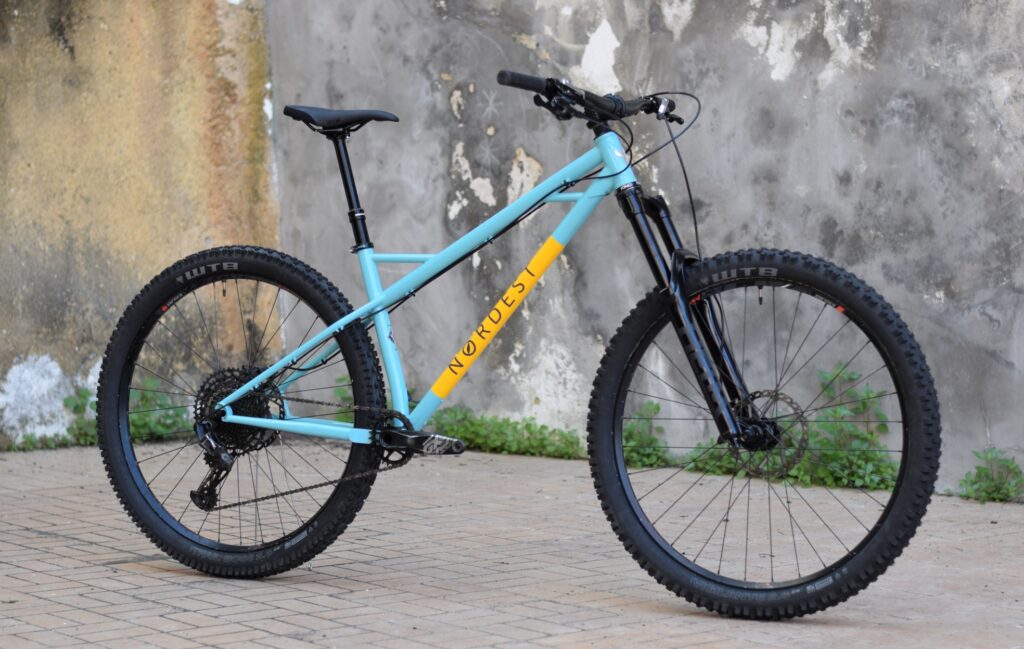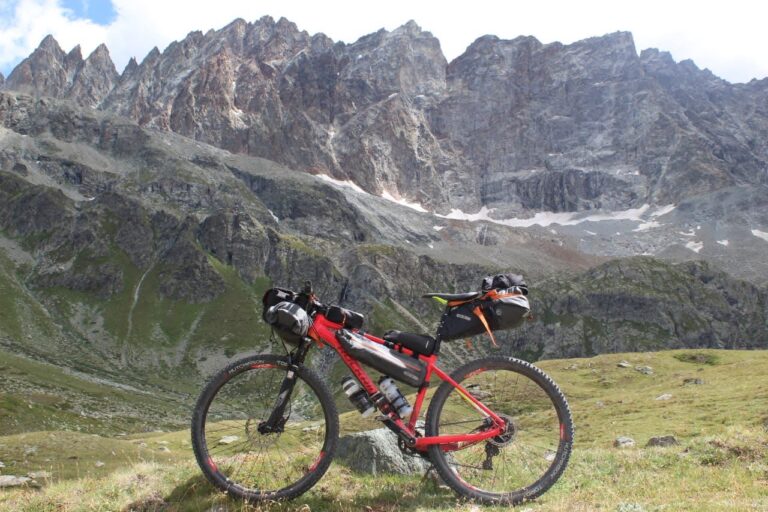Types of Mountain Bikes: Exploring All MTB Disciplines
Gone are the days when cross country, downhill, enduro, freeride, all-mountain, and trail were all lumped together under the single label of “mountain bike.” The sport has come a long way, with each mountain bike discipline now boasting its own unique bikes, apparel, gear, events, enthusiasts, and champions.
Welcome to Aventrilha. My name is Fernando and I write primarily in Portuguese, but if this post isn’t a complete flop, I might continue to write in the Shakespearean tong.
In this article, we’ll take you on a tour through the diverse world of mountain biking, covering all the different types of mountain bikes. By the time you finish reading, you’ll have a solid understanding of the various disciplines and be ready to choose the perfect mountain bike for your next adventure.
First: the Mountain biking spectrum
The light-speed changes in the world of cycling wait for no one. Chances are I will need to come back here to update this section next spring when the MTB industry decides the new wheel size or frame geometry they came up with is the best one.
For now, you only need to know this: mountain bikes can be optimized for pedaling efficiency and uphill riding or for stability and downhill performance.
I created the chart below to illustrate how three types of mountain bikes could be distributed in a pedaling x descending spectrum:

And here are these three bike frames – to scale! – stacked upon each other:

Now that that’s out of the way let’s begin with the leftmost bike on our chart, the cross-country bike.
Cross-Country Mountain Bikes

Cross-country (XC) bikes type of mountain bikes are designed to handle various terrains with a focus on speed and pedaling efficiency. No kind of bike beats an XC bike riding uphill or in light undulating terrain.
They can tackle singletrack, double track, fire roads, and other unpaved paths. Cross-country, as a mountain biking discipline at a professional level, is raced in lap circuits that involve short technical trails and a lot of climbing.
Modern XC bikes feature the following traits:
- Frame geometry: XC bikes feature a balanced geometry that facilitates efficient climbing and confident descending, making them versatile performers on diverse trails.
- Short travel: With modest suspension travel typically ranging from 80-120mm, XC bikes strike a balance between comfort and efficiency, ensuring a smooth ride without sacrificing pedaling power.
- Lightweight: Prioritizing lightweight construction, XC bikes are built to minimize overall weight, which enhances their agility and responsiveness, particularly during uphill climbs and long-distance rides.
These technical features combine to create a well-rounded mountain biking experience that caters to riders seeking a bike that can tackle a wide range of trail conditions while offering speed, control, and comfort.
Entry-level cross-country bikes offer the best entry point into mountain biking. They are generally hardtail mountain bikes with adequate off-road capabilities for beginners while keeping costs relatively low.
However, this is not to say they are made only for beginner riders. They are designed to be lightweight and efficient. They are optimized for speed and agility, with narrow tires, a short travel fork, and a lightweight frame, allowing cross-country riders to easily navigate technical terrain and climb steep hills.
Trail Bikes

Next in line is the trail bike.
Trail bikes are a versatile type of mountain bike designed to handle a wide range of terrains, striking a balance between uphill efficiency and downhill confidence. These bikes are perfect for riders who enjoy exploring varied trails, from singletrack to technical descents and everything in between.
Trail riding as a mountain biking discipline focuses on the fun aspect of the sport, emphasizing flowy descents, moderately technical sections, and manageable climbs. Trail bikes are built to accommodate various skill levels and riding preferences, making them popular among mountain bikers.
Modern trail bikes exhibit the following traits:
- Frame geometry: Trail bikes are designed with a neutral geometry that offers a comfortable and stable riding position, making them capable climbers and confident descenders on various terrains.
- Mid-range travel: Featuring suspension travel typically ranging from 120-150mm, trail bikes provide a comfortable ride and ample impact absorption for tackling obstacles and rough terrain without compromising pedaling efficiency (too much).
- Optimized weight: While not as lightweight as cross-country bikes, trail bikes prioritize a balance between weight and durability, ensuring they remain agile and responsive without sacrificing robustness for more challenging terrain.
These design features come together to deliver an enjoyable mountain biking experience that caters to riders seeking a bike that can confidently handle diverse trail conditions while providing a blend of speed, control, and comfort.
The trail bike is almost always a full suspension bike – in other words, it comes with a rear suspension along the front suspension. There are hardtail trail bikes, like this Giant below, but they form a minority:

Trail bikes accommodate most riding styles – they are well-suited to tackling technical terrain, flowing descents, and demanding climbs, providing a well-rounded and engaging mountain biking experience.
All-Mountain Bike

A few years ago, asking, “What is the difference between an all-mountain and an enduro bike?” you would likely get into an argument. There was immense confusion when it came to differentiating these two.
All mountains have found their place in the MTB realm, and it snugs right between the trail and the enduro. They are designed for more aggressive downhill sections, tackling challenging terrain and pushing the limits of both downhill performances without compromising a ride uphill.
Modern all-mountain bikes exhibit the following traits:
- Frame geometry: All-mountain bikes’ geometry provides stability and confidence on steep and technical descents while still maintaining (some) efficient climbing capabilities.
- Longer travel: Boasting suspension travel typically 140-170mm, all-mountains the full suspension mountain bike per excellence. You can start considering a jump or two without totally sacrificing pedaling performance.
- Durability and weight: While not as lightweight as trail or cross-country bikes, all-mountain bikes balance weight and durability, ensuring they can handle the demands of aggressive riding while remaining reasonably agile and responsive.
If you own one plan to, chances are you rode your fair share of hardtail bikes and understand your love for descending (and a rear shock) but aren’t ready to commit to a downhill bike yet. They are versatile and modern mountain bikes suitable for riders seeking a bike that can confidently tackle challenging trail conditions while offering a blend of climbing efficiency, control, and downhill performance.
While all-mountain bikes share some similarities with enduro bikes, they are designed to be more versatile, focusing on both climbing and descending, as opposed to the predominantly downhill focus of enduro bikes.
Speaking of which:
Enduro Mountain Bikes

An enduro mountain bike is designed for aggressive downhill performance while retaining enough uphill capability to get riders to the top of the mountain. These bikes are perfect for riders who prioritize descending technical terrain at high speeds but still need to pedal to the trailhead.
As a mountain biking discipline, enduro focuses on timed downhill sections interspersed with untimed uphill segments, requiring a bike that can handle gravity-fueled descents and pedal uphill to the next segment.
An enduro mountain bike has the following traits:
- Frame geometry: Enduro bikes emphasize stability and control during high-speed descents and moderate jumps, with a longer wheelbase and slacker head angle for improved handling on steep, technical terrain.
- Long travel: their travel ranges from 150-180mm and offers excellent impact absorption and control on rough terrain, drops, and jumps.
- Weight and durability: While heavier than trail or cross-country bikes, enduro bikes are built for robustness and durability, utilizing sturdy components and frames to withstand the demands of aggressive downhill riding without sacrificing too much uphill efficiency.
Enduro bikes are almost exclusively full-suspension bikes, with front and rear suspension designed to provide maximum comfort and control on challenging terrain. They suit experienced riders who prioritize downhill performance or those participating in enduro racing events.
While enduro bikes are similar to all-mountain bikes, they are designed to excel on timed downhill sections. In contrast, all-mountain bikes offer a more balanced performance for both climbing and descending.
Downhill bikes

Downhill mountain bikes are purpose-built for tackling highly technical, steep descents at high speeds. These bikes are designed to handle the most challenging and adrenaline-pumping terrain, ensuring maximum control, stability, and confidence for riders descending at breakneck speeds.
Downhill as a mountain biking discipline demands excellent bike handling skills and a strong focus on safety gear, including full-face helmets, knee pads, elbow pads, shin guards, and protective gloves.
A downhill mountain bike has the following traits:
- Frame geometry: Downhill bikes’ geometry maximizes stability and control during high-speed descents, enabling riders to confidently tackle steep, technical terrain.
- Long travel: Boasting suspension travel typically around 200mm or more, downhill bikes offer exceptional impact absorption and control on rough terrain, drops, and jumps, prioritizing downhill performance above all else.
- Weight and durability: Downhill bikes prioritize strength and durability over weight savings, utilizing robust components and frames to withstand the rigors of aggressive downhill riding and racing.
Downhill bikes are exclusively full-suspension bikes, with both front and rear suspension designed to provide maximum comfort and control on challenging terrain. They suit experienced riders prioritizing downhill performance or those participating in downhill racing events.
Other Types of Mountain Bikes
While the five primary categories of mountain bikes cover most riding styles and terrain preferences, several niche disciplines and specialized bike designs cater to specific needs and unique riding experiences.
These bikes may share some characteristics with the main categories but have specific features and designs that set them apart. This section will briefly discuss freeride, trial, dirt jump, fat, downcountry, and marathon mountain bikes.
Freeride Bikes

Freeride bikes are designed for riders seeking big air, steep descents, and technical features, blending elements of downhill and all-mountain bikes. These bikes prioritize suspension travel, durability, and control, allowing riders to confidently tackle challenging terrain, jumps, and drops while maintaining some uphill capability.
Trial Bikes

Trial bikes focus on balance, precision, and control as riders navigate obstacles without putting their feet on the ground. These bikes are lightweight and nimble, featuring minimalistic frames, single-speed drivetrains, and low-profile tires for maximum maneuverability and responsiveness.
Dirt Jump Bikes

Dirt jump bikes are designed for aerial stunts, tricks on dirt jump trails, and skatepark-style features. These bikes have solid and compact frames, short-travel suspension or rigid forks, and smaller wheels for maximum agility and control in the air. The geometry and components are tailored for quick acceleration and precise handling during jumps and landings.
Fat Bikes

Fat bikes are mountain bikes with extra-wide tires (usually 4 inches or wider) for improved traction and flotation on soft or unstable surfaces like snow, sand, and mud. These bikes enable riders to explore new terrains and ride in challenging conditions where traditional mountain bikes may struggle.
Downcountry Bikes
Downcountry bikes are a relatively new category, blending the lightweight and efficiency of cross-country bikes with the more aggressive geometry and slightly longer travel of trail bikes. These bikes cater to riders seeking a fast and efficient bike that can handle a variety of terrains while still providing a bit of extra confidence on descents.
Marathon Mountain Bikes
Marathon mountain bikes are designed for long-distance cross-country racing and endurance events, emphasizing efficiency, comfort, and reliability for many hours in the saddle. These bikes typically feature lightweight frames, efficient suspension designs, and components chosen for their durability and performance during extended periods of riding.




[…] I have a full article on MTB disciplines if you want to learn more about all types of mountain bikes. […]